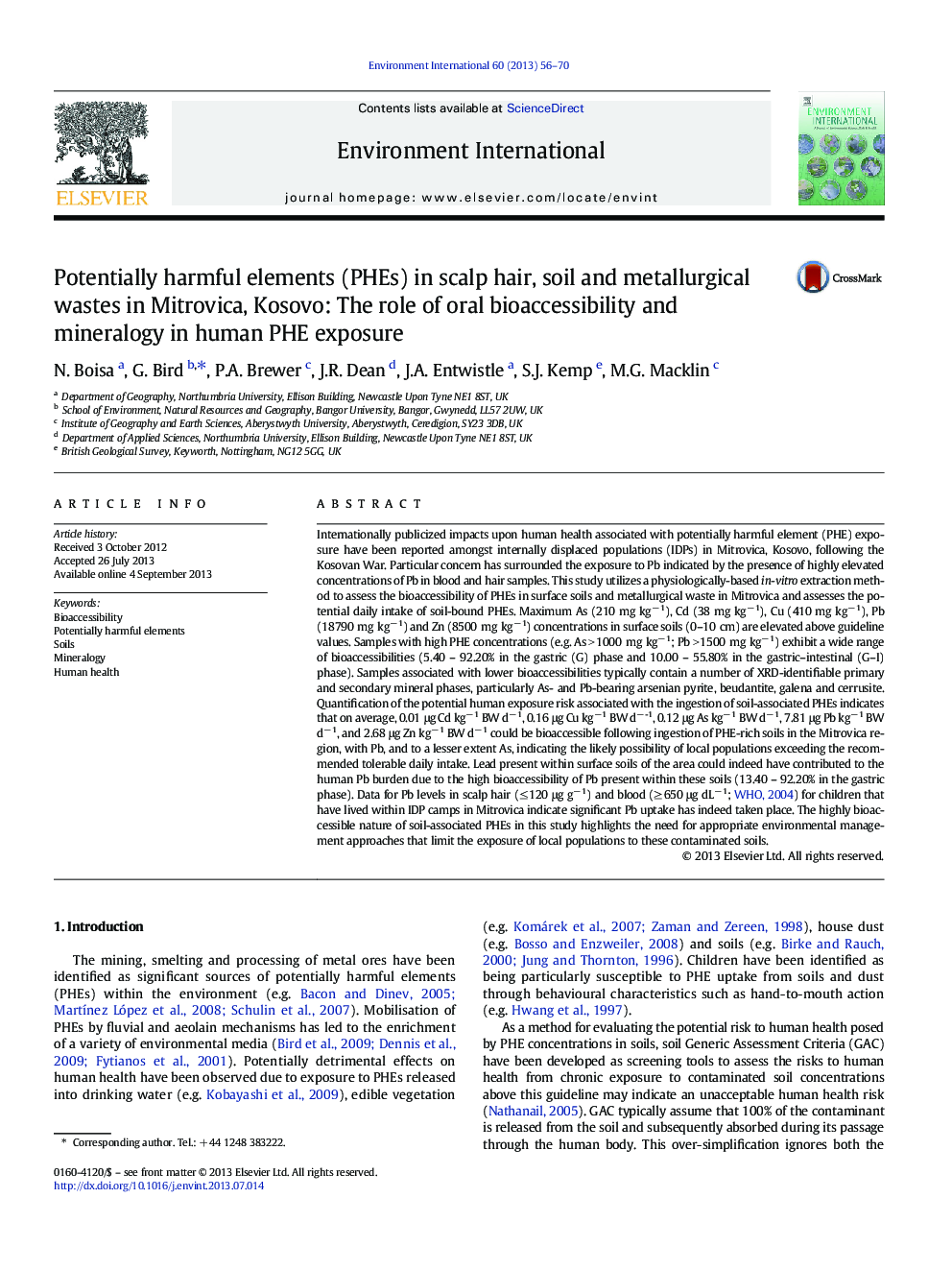| Article ID | Journal | Published Year | Pages | File Type |
|---|---|---|---|---|
| 6314180 | Environment International | 2013 | 15 Pages |
Abstract
Internationally publicized impacts upon human health associated with potentially harmful element (PHE) exposure have been reported amongst internally displaced populations (IDPs) in Mitrovica, Kosovo, following the Kosovan War. Particular concern has surrounded the exposure to Pb indicated by the presence of highly elevated concentrations of Pb in blood and hair samples. This study utilizes a physiologically-based in-vitro extraction method to assess the bioaccessibility of PHEs in surface soils and metallurgical waste in Mitrovica and assesses the potential daily intake of soil-bound PHEs. Maximum As (210 mg kgâ 1), Cd (38 mg kgâ 1), Cu (410 mg kgâ 1), Pb (18790 mg kgâ 1) and Zn (8500 mg kgâ 1) concentrations in surface soils (0-10 cm) are elevated above guideline values. Samples with high PHE concentrations (e.g. As > 1000 mg kgâ 1; Pb > 1500 mg kgâ 1) exhibit a wide range of bioaccessibilities (5.40 - 92.20% in the gastric (G) phase and 10.00 - 55.80% in the gastric-intestinal (G-I) phase). Samples associated with lower bioaccessibilities typically contain a number of XRD-identifiable primary and secondary mineral phases, particularly As- and Pb-bearing arsenian pyrite, beudantite, galena and cerrusite. Quantification of the potential human exposure risk associated with the ingestion of soil-associated PHEs indicates that on average, 0.01 μg Cd kgâ 1 BW dâ 1, 0.16 μg Cu kgâ 1 BW dâ-1, 0.12 μg As kgâ 1 BW dâ 1, 7.81 μg Pb kgâ 1 BW dâ 1, and 2.68 μg Zn kgâ 1 BW dâ 1 could be bioaccessible following ingestion of PHE-rich soils in the Mitrovica region, with Pb, and to a lesser extent As, indicating the likely possibility of local populations exceeding the recommended tolerable daily intake. Lead present within surface soils of the area could indeed have contributed to the human Pb burden due to the high bioaccessibility of Pb present within these soils (13.40 - 92.20% in the gastric phase). Data for Pb levels in scalp hair (â¤Â 120 μg gâ 1) and blood (â¥Â 650 μg dLâ 1; WHO, 2004) for children that have lived within IDP camps in Mitrovica indicate significant Pb uptake has indeed taken place. The highly bioaccessible nature of soil-associated PHEs in this study highlights the need for appropriate environmental management approaches that limit the exposure of local populations to these contaminated soils.
Related Topics
Life Sciences
Environmental Science
Environmental Chemistry
Authors
N. Boisa, G. Bird, P.A. Brewer, J.R. Dean, J.A. Entwistle, S.J. Kemp, M.G. Macklin,
